It would be the late summer of 1981 before my curiosity got the better of me and I bought my first record by Wire. It was an educated guess – I’d heard nothing by them (not even on the John Peel show, which I had begun to tune into fairly frequently from 1980 onwards), but every time I read about them (and related solo releases) in the music press it seemed to make sense that I would like them. The first releases I would get hold of were the ‘Our Swimmer’ single (which has been covered in a previous post) and the ‘Ends With The Sea’ 7″ single by BC Gilbert and G Lewis – names I was already well familiar with by the more intriguing moniker of DOME. Smash Hits reviews had enthused about the first two albums released by Dome – particularly ‘Rolling Upon My Day’ from the first album. Photos of the duo pictured a serious and no nonsense duo, the record sleeves equally arty and intriguing. The calling card of that first single purchase convinced me enough that when readies allowed, I would definitely investigate further.
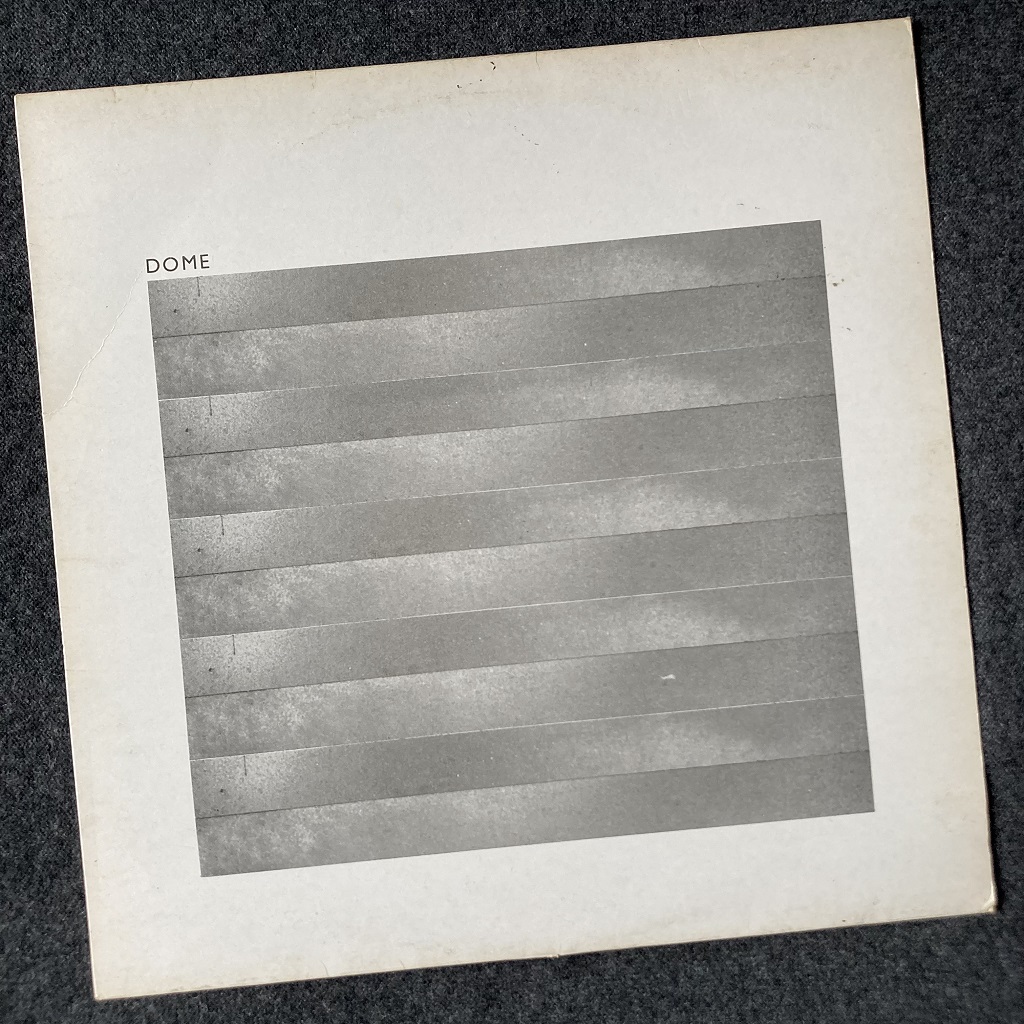
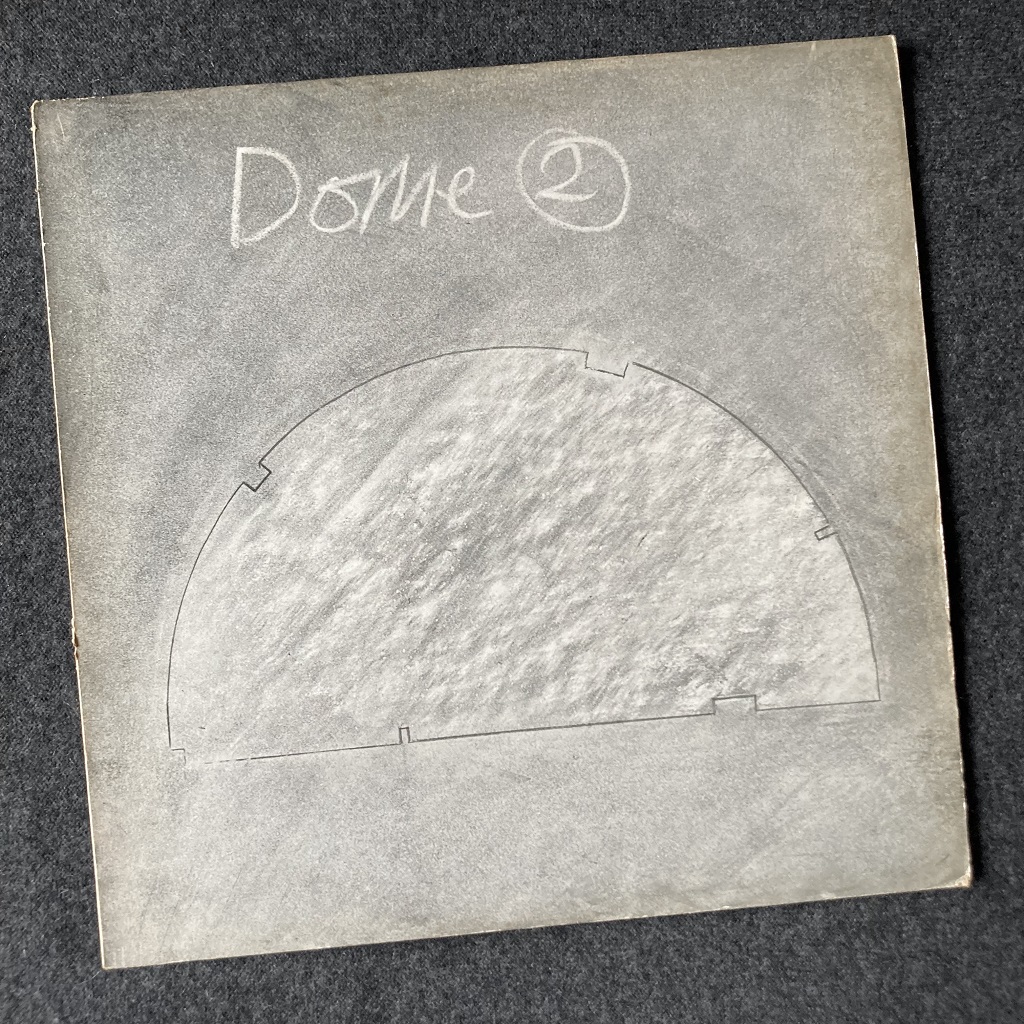
The first of those two Dome LPs I would come across was actually ‘Dome 2’, a second-hand copy, in December 1981. I bought it along with Joy Division’s ‘Still’, New Order’s ‘Movement’ (both of which quite recent releases) and ‘154’ by Wire (complete with its free 7″ EP). A mammoth listening session awaited that Saturday afternoon.
With the first tones of ‘Dome 2’, I was already hooked – warm, strange washes of synthetic sound, rolling in and out like some strange sonic tide – the calm, first half of the first part of ‘The Red Tent’ duo. Slowly it became eerier, odd, more discordant notes cropping up before a somewhat malevolent, insistent bass synthesiser sequence came pushing over the horizon like some invading sea armada (though more likely some kind of treated drum machine, perhaps?), before the rhythm comes to a sudden halt and part one fades out with with slow, decaying notes. ‘The Red Tent II’ starts off with a variant on that sequencer, joined with rudimentary time-keeping snare before a dual assault of horror-story vocal story telling from Graham Lewis along with wailing and meandering distorted/treated cacophonic guitars provide a claustrophobic, ominous feel that fits the sing’s conclusion of tragedy for explorers… “White breath and crystal glare, the red tent is a, is a, is a, is a, is a tomb…”.
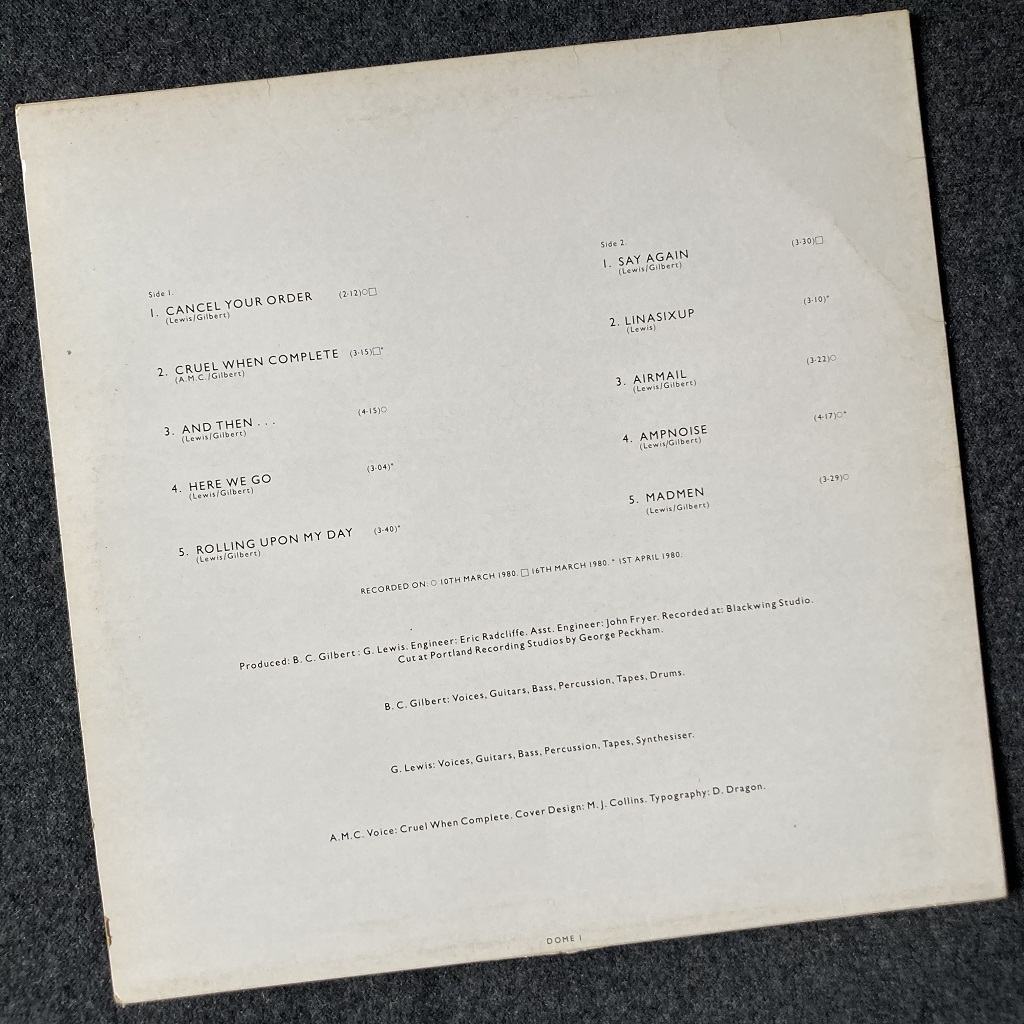
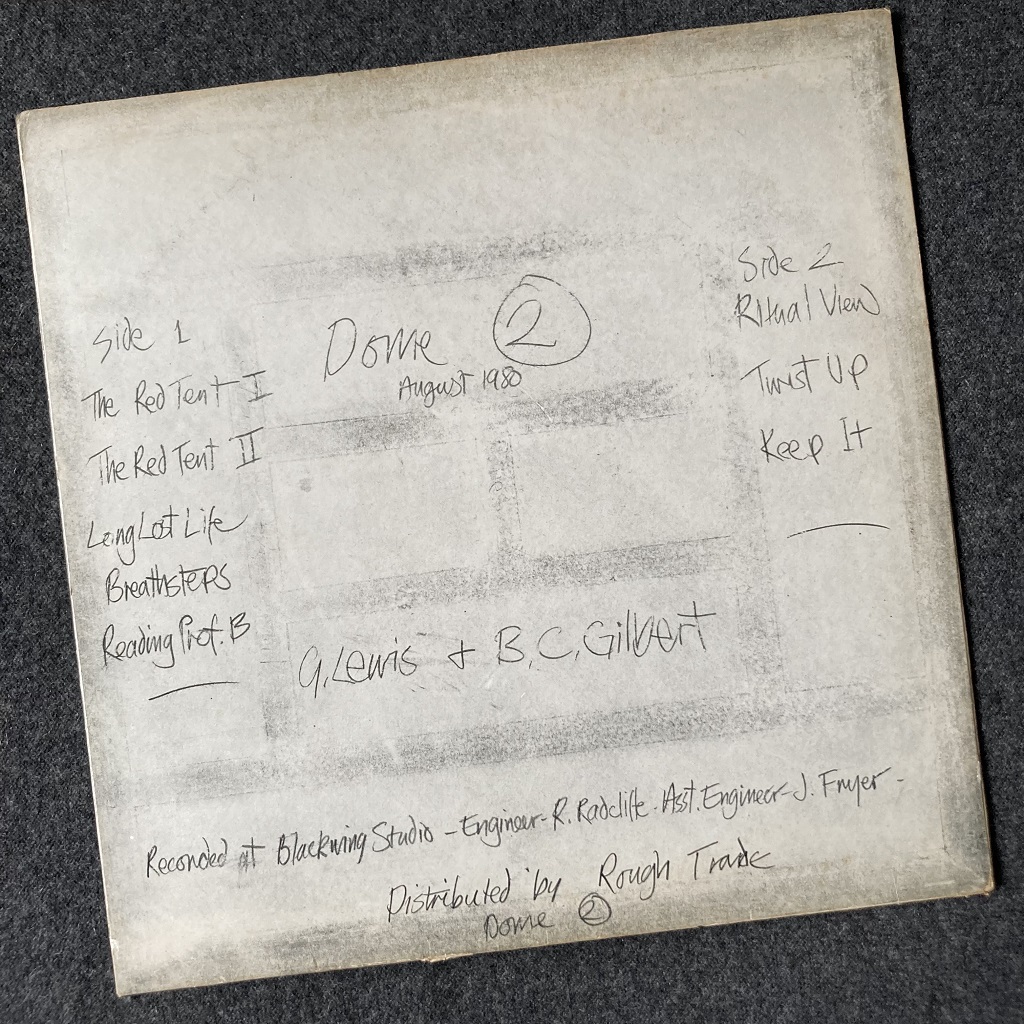
‘Long Lost Life’ with something resembling a more Wire-like, insistent guitar structure features BC Gilbert on vocal, another unsettling fractured story not a million miles away from his disturbing ‘The Other Window’ on Wire’s ‘154’, a grimly fascinating tale of a a tourist’s ability to turn his horrified gaze the other way when confronted by a gruesome scene. Turns out that this track started off life during Wire’s latter days too, originally being intended to be Gilbert’s piece for the four track 7″ EP that came with initial copies of ‘154’, but abandoned to make way for ‘Small Electric Piece’ instead. ‘Breathsteps’ harks back in its regimented rhythm to the first album’s ‘Here We Go’, perhaps – this time Graham Lewis on vocal, above the clanging metallic percussion and free-form electric guitar again. Side one concludes with the unsettling, drifting near instrumental, ‘Reading Prof. B’ – multiple layers of repetitive, mesmerising, guitars and bass, punctuated halfway through by some maniacal laugh field recording from a previous Wire tour.
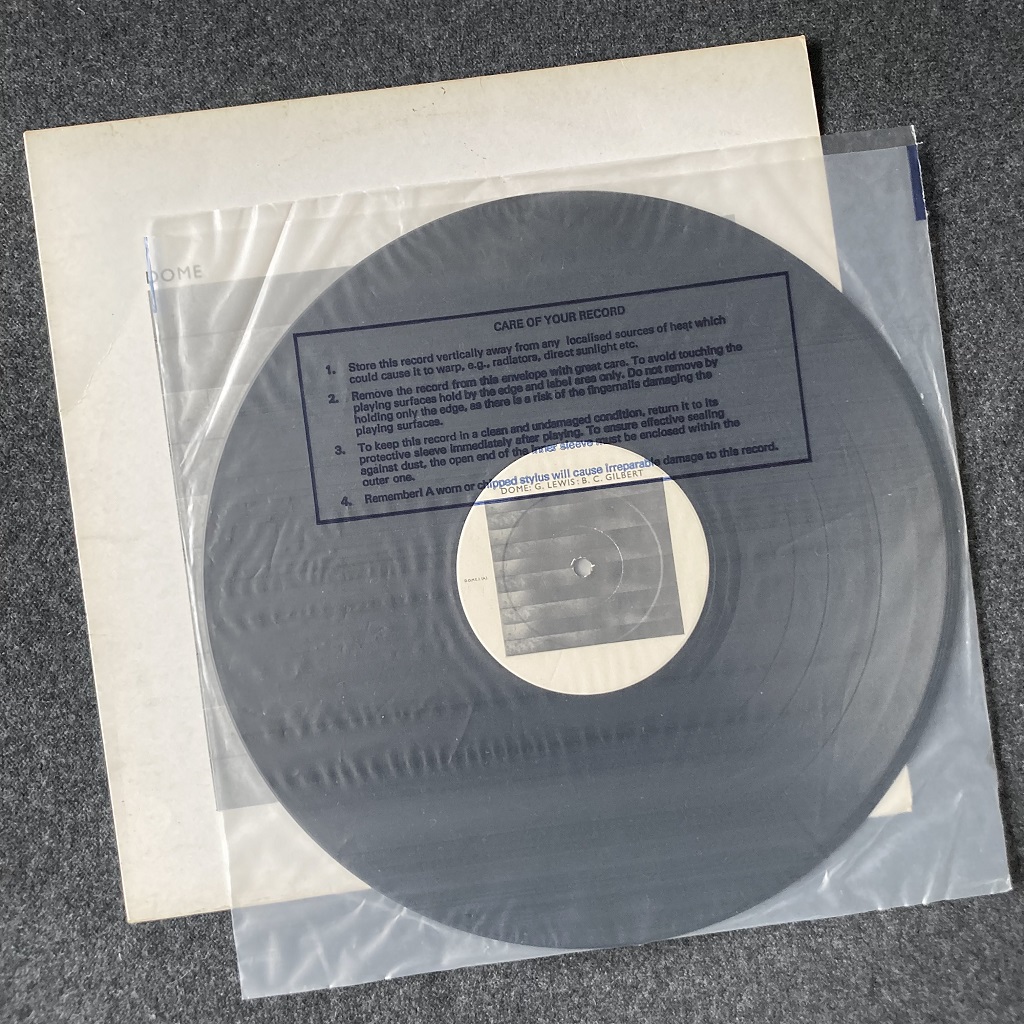
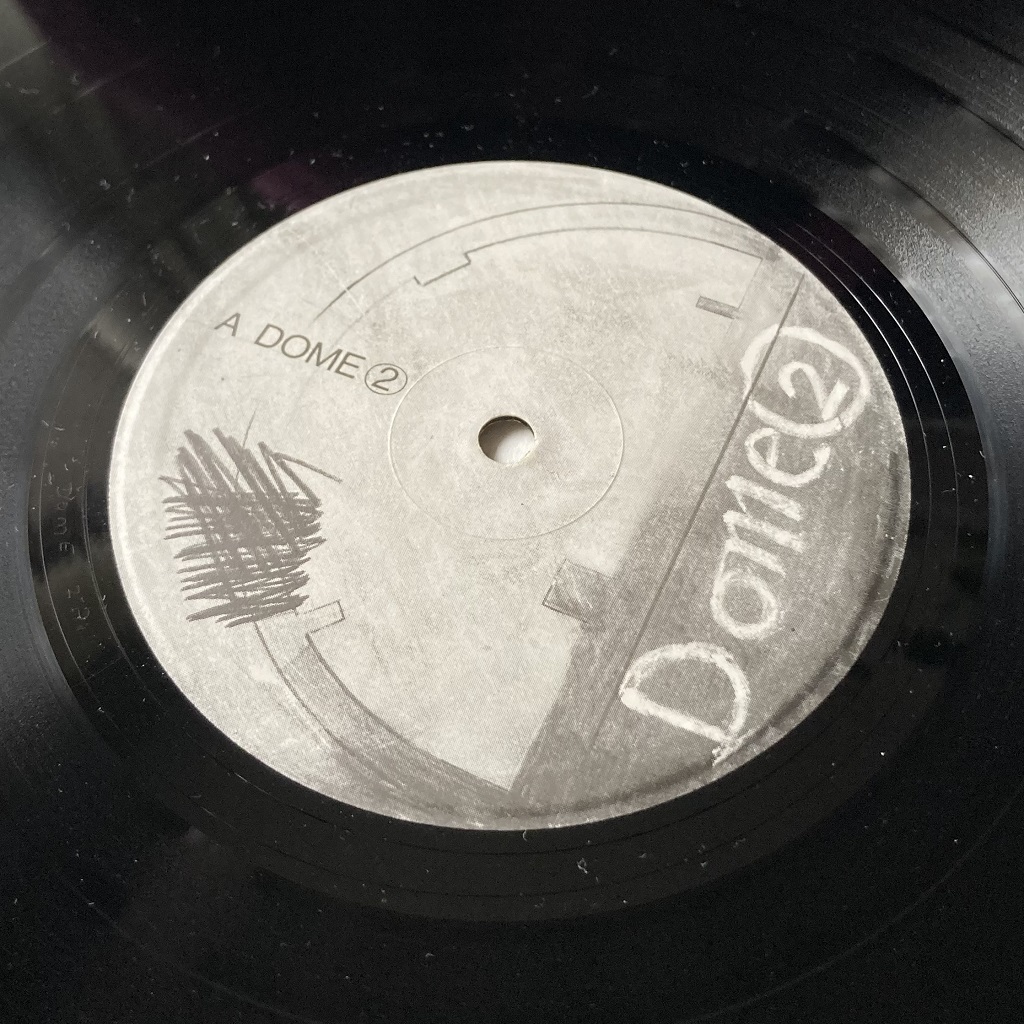
Side two commences with one of the many tracks that Wire had debuted in their last original run of gigs but had never recorded a studio version of – ‘Ritual View’. Dropping in mid-note with some machine-like, tireless electric bass rhythm, dreamlike, dolorous keys float above along with Graham Lewis singing atop. Many years later, a live recording of Wire’s take would appear, somewhat more skittish and free-form than this strident take. You’d hardly call it single material, but it’s probably the most accessible track on the album.
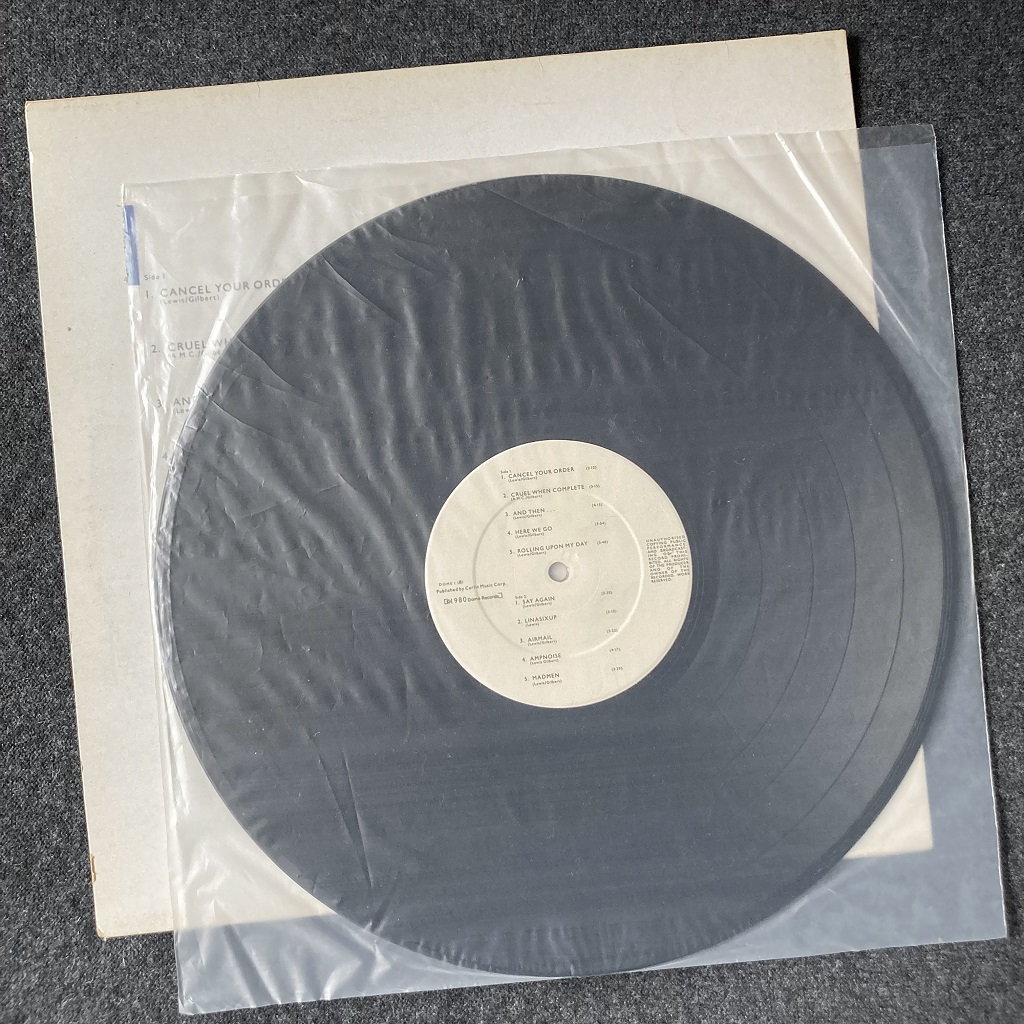
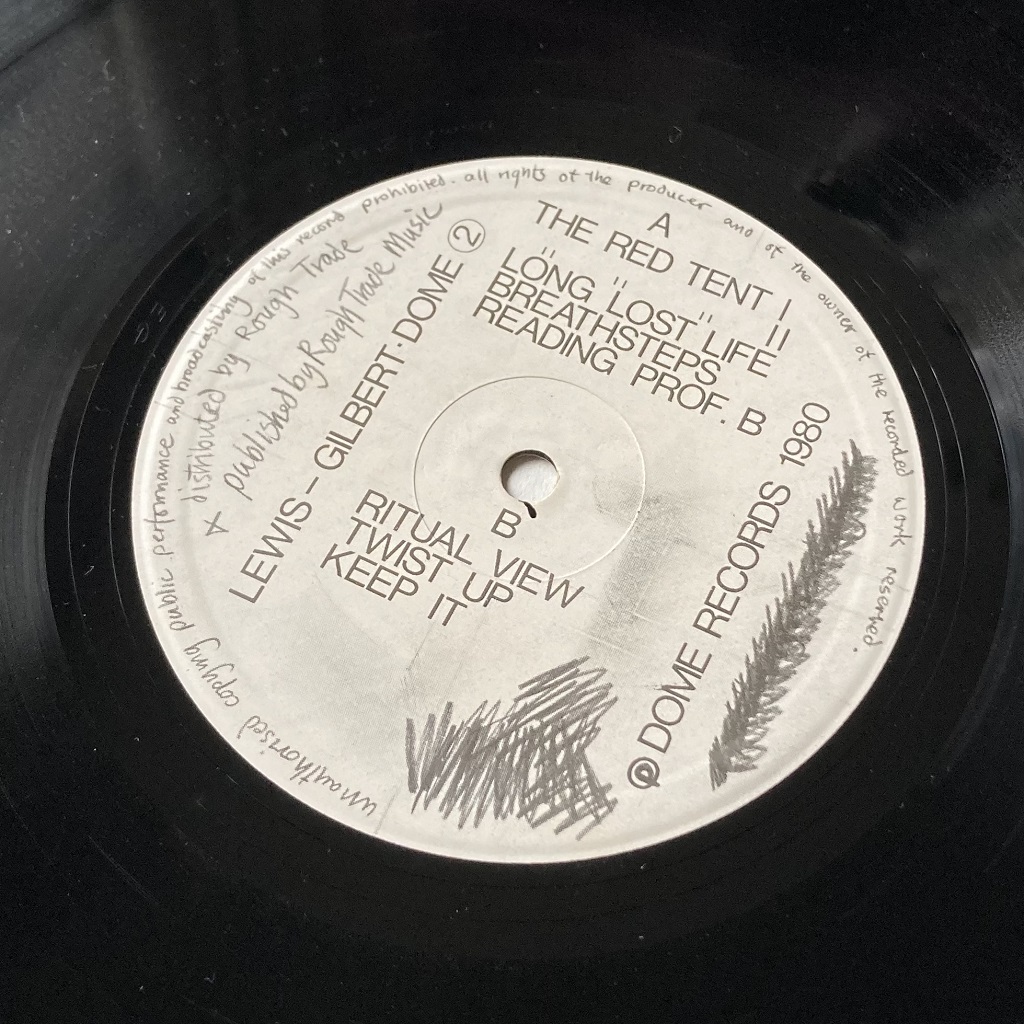
The remainder of side two is far from accessible – the elastic distorted guitar and nimble bass guitar workout that is ‘Twist Up’, with it’s barked, tongue-twister orders passing for vocals. (This track would also appear in the ‘From Brussels With Love’ compilation cassette tape in late 1980 too.) The side rounds out with ominous, slow-motion starkness of ‘Keep It’ – seven minutes plus that takes in tape-looped rhythmic elements, petering out with random percussive bangs and crashes. Uneasy listening for late night headphone storming.
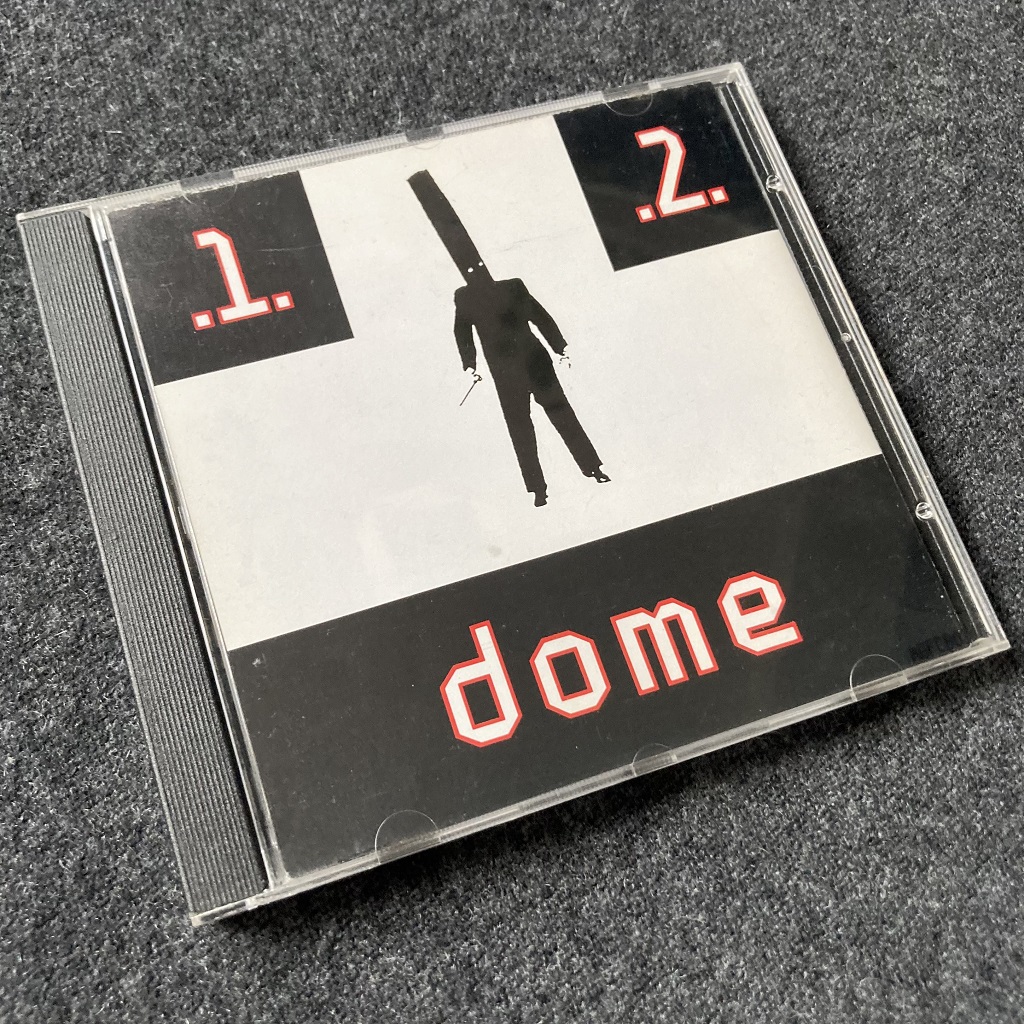
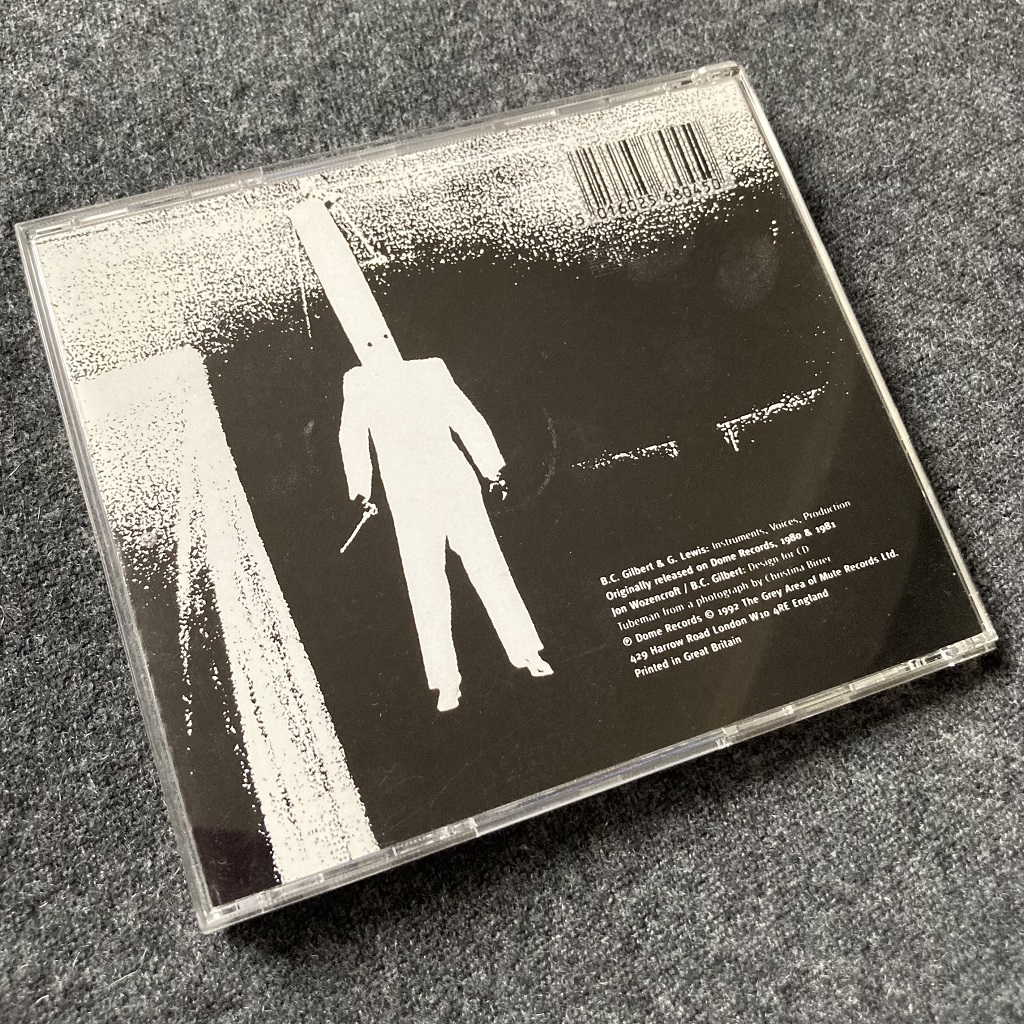
A copy of the first ‘Dome’ album had remained temptingly out of reach in the rather more expensive, full price racks of Bruce Millers, which in early 1982 still had two local branches, one of which resided in Loch Street – but patience paid off as one day it ended up at a much reduced sale price.
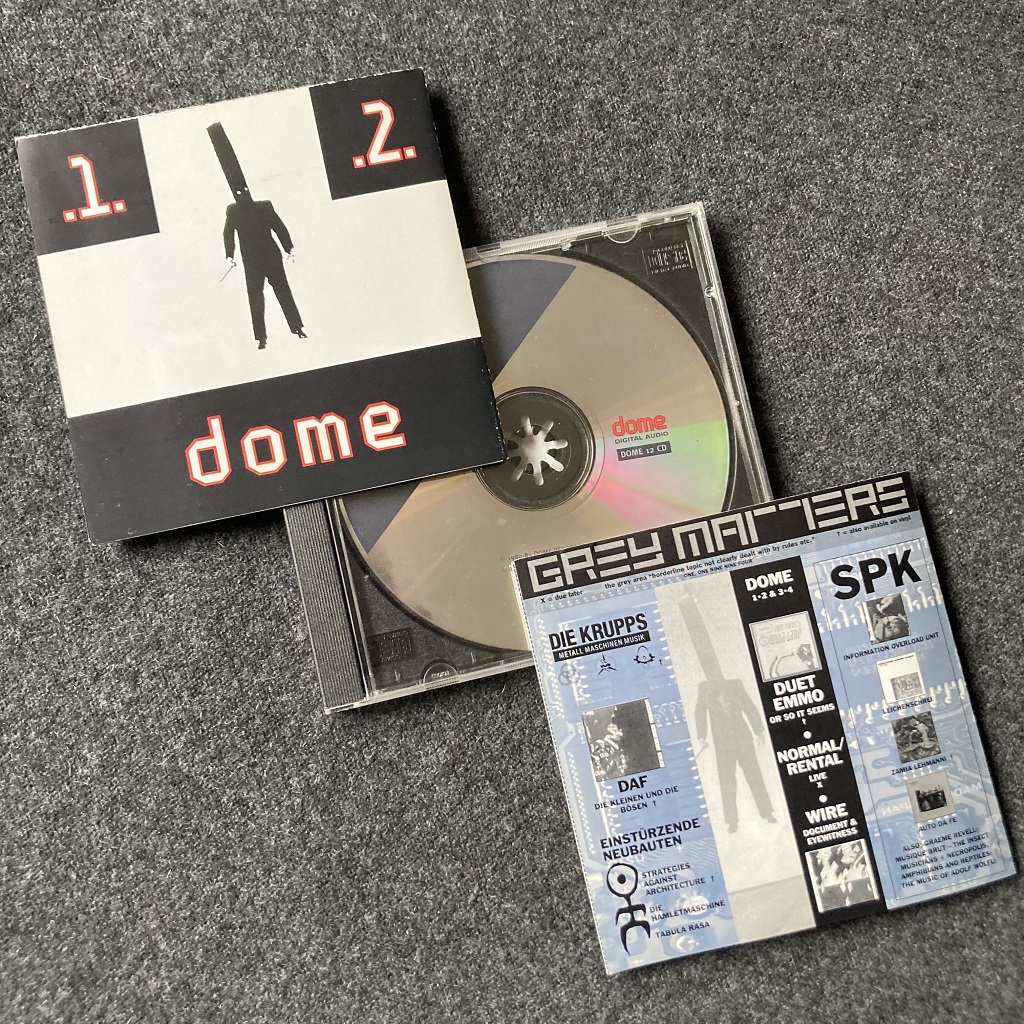
It starts off in media res like some exciting, seemingly breathless, non-stop reportage from some war zone by way of ‘Cancel Your Order’ which musically, is made up of… who quite knows what? A track of the same name from Wire’s latter days – a rehearsal take – would eventually be released in 2014 on an expanded 2 CD re-release of the ‘Document and Eyewitness – 1979 – 1980’ album… it don’t know if the two are related at all musically (tho Go Lewis is on record as noting that it was already written on Wire’s support tour for Roxy Music In 1979). Lyrically, the rehearsal take is so muddy… who knows? Meantime, this version comes to a crunching end before another icy cool slowly unfurling intro of ‘Cruel When Complete’ appears – unique in featuring the chill, detached vocal croon of A C Marias, here credited as AMC.
‘And Then…’ was familiar – I already knew it well from Wire’s live recording of it on the ‘Document and Eyewitness’ album, which had been a post-Christmas treat. This version is in equal parts more minimal and yet more expansive, with greater use of backing tapes of found recordings – but otherwise is structurally similar, while being half as long. “Keep shoving those double thick slices of electric salad down my throat” indeed…
‘Here We Go’ as mentioned earlier is built upon a march-like rhythm, fragmentary snippets of voice sliced and sequenced throughout
‘Rolling Upon My Day’ is quite something else. The first minute a fast paced instrumental piece, it cross fades with a more traditionally structured musical piece – low-fi rhythm loop (which is Robert Gotobed) and a lush guitar chord figure (Graham Lewis, surprisingly, in his first recorded guitar outing), alongside which is an impassioned Lewis vocal. “I feel it in in my fingers, I feel it in in my toes, I feel it in in my breakfast and even in my clothes…”.
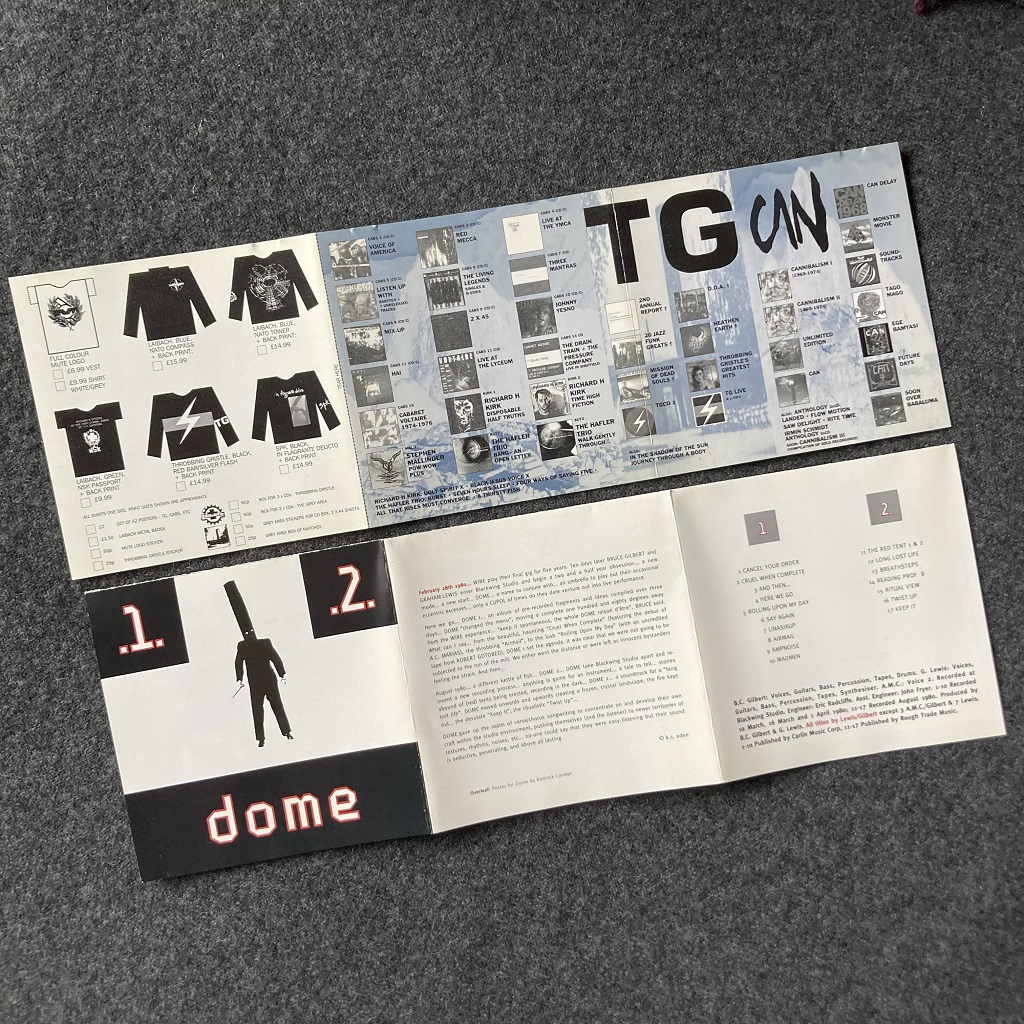
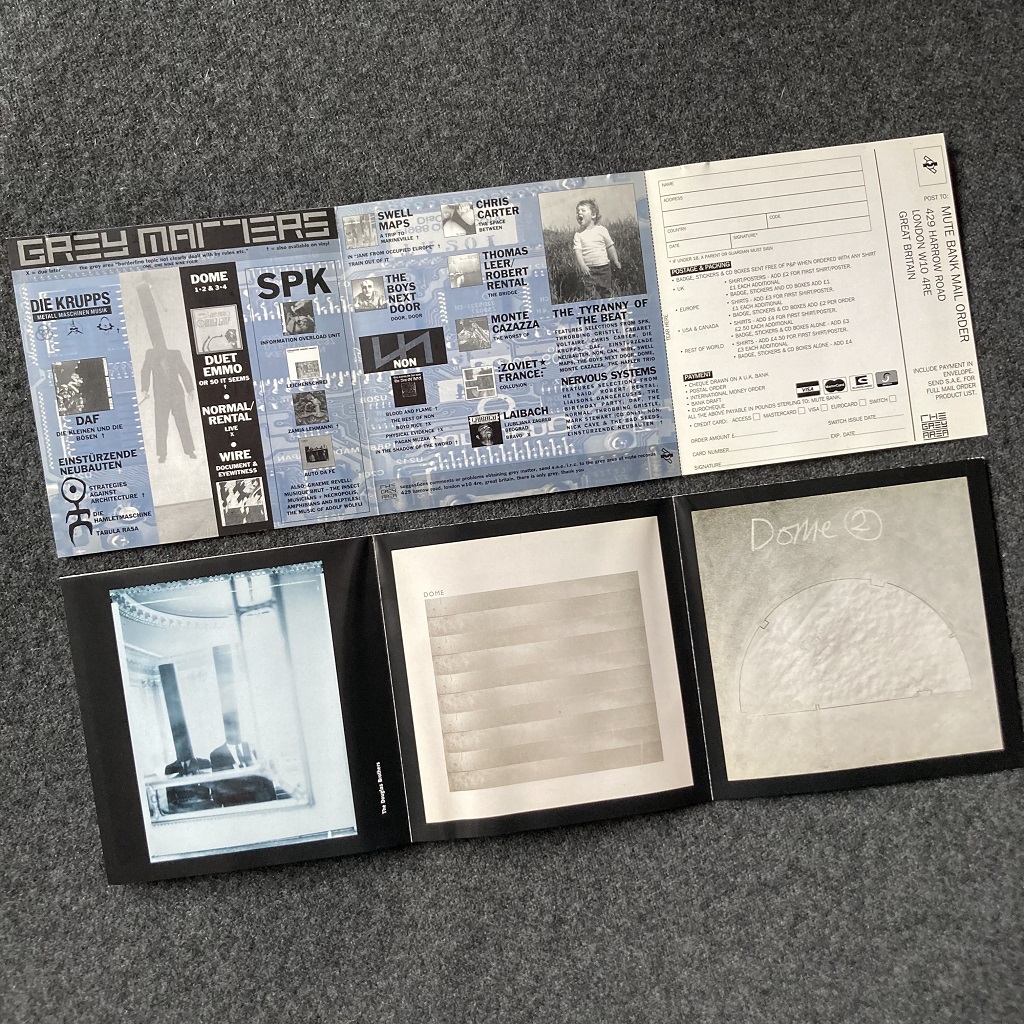
Flipping the record over, side two is a whole lot more of a minimal, low key affair than side one. ‘Say Again’ starts it off, instrumentally still recognisable, just about, with somewhat random association, freeform, slurred vocals courtesy of Graham Lewis. Uneasy listening. From here on, it’s more challenging listening still… ‘Linasixup’ is an odd one that would come back to life in revisited form as ‘The First Person’ on the Duet Emmo album, ‘Or So It Seems’ – similar, crooning vocals, here with next to no instrumentation to accompany them, just pulsing bass and random radio samples.
Meanwhile, more recycling of Wire source material is to be had in ‘Airmail’, which, if you play it backwards, you’ll find the bass line to be from Wire’s ‘Go Ahead’. As for ‘Ampnoise’ – well, I think it fair to say that a clue is in the name… along with all manner of other buzzing and humming sound sources.
‘Madmen’ with its lurching, drunken rhythm and vocal is once again back on something like a more traditional instrumental path, a strange twin perhaps to ‘And Then…’ – again with deliberately slurred, effected vocals, rising in ferocity. It ends with a bizarre, expletive-laced rant from… who knows who… On the vinyl album you can barely hear it at all, some while after the track finishes but before the record runs out. On the CD, the volume is boosted so it is loud and clear as a bell.
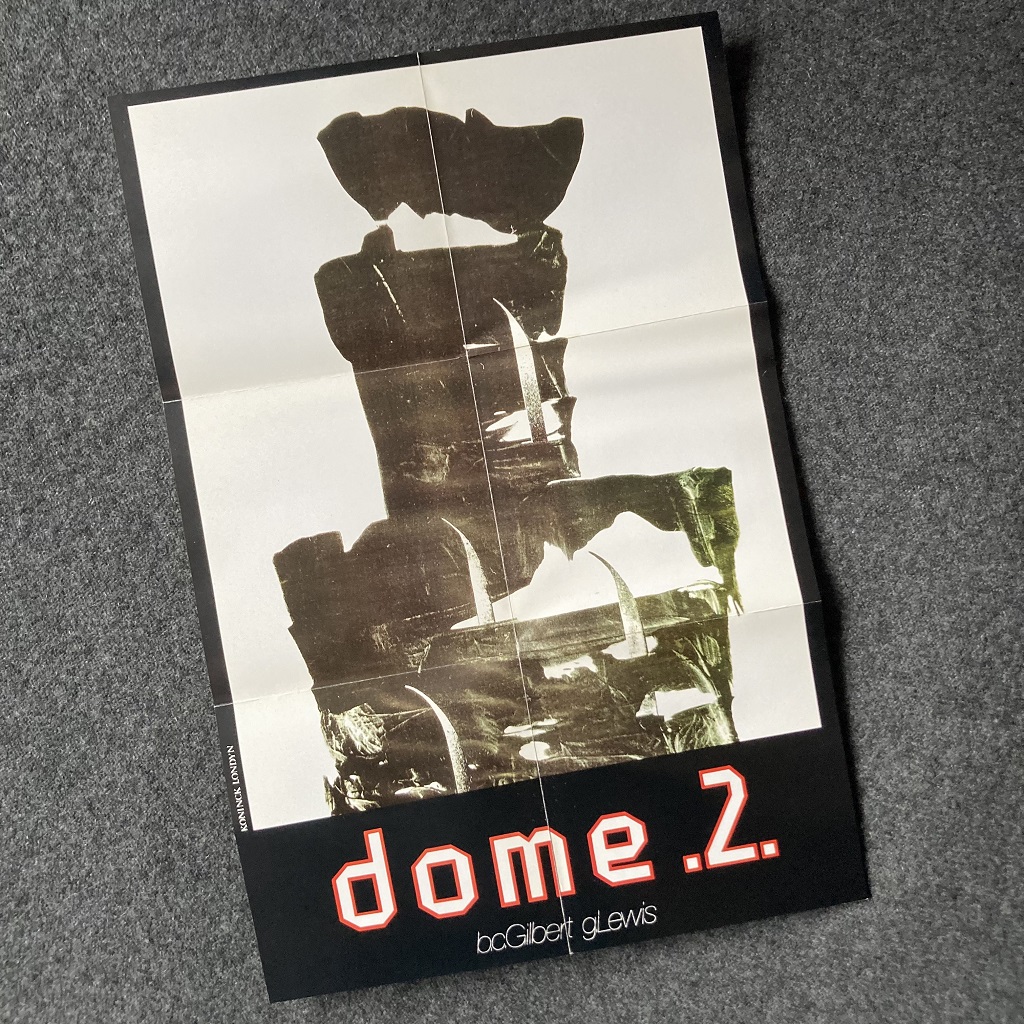
While the CD re-issue remained faithful to the original albums in terms of the music, it came at it all afresh with the cover design, now completely reconfigured by Jon Wozencroft and BC Gilbert. Granted, reproductions of the front covers for each of the original LP were to be found inside the fold-out booklet, but otherwise it was largely all new… including, spread across the poster fold-out, a somewhat abstract figure design by Koninck Londyn (aka The Brothers Quay) that had originally been included as an insert in the promo Japanese issue of ‘Dome 2’ by Rough Trade Japan. The CD also comes with ‘Grey Matters’, Mute’s promotional material for their Grey Area release of the time.
Finally, both albums were recorded at Blackwing Studio in London with Eric Radcliffe and John Fryer on hand to engineer and assist (as well as portions at home on more basic recorders) and the ‘studio as instrument’ approach of taking and making anything into a suitably malleable sound source is there for all to hear across both discs. As explained in interviews contained in Kevin S. Eden’s book, ‘Wire… Everybody Loves a History’, Gilbert and Lewis had wanted a simple 8-track studio to record an album in, as antidote to the perfection of Wire’s 24-track, precision finish epic of ‘154’. Such sonic play would become even more the norm with further releases as their confidence grew…

